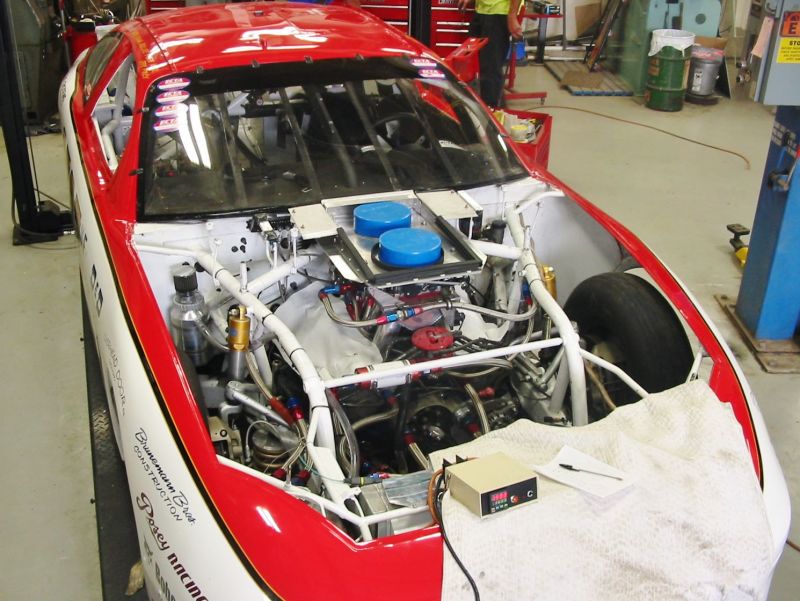OperaHouse
Electrical
A friends race car engine has a dry oil sump and he wanted me to built a "babysitter" temperature controller for the tank to keep the temperature up between runs. I bought a cheap PID controller to drive a SSR into two 500W heaters. Initial test was with 4 gallons of oil using factory settings on the controller just to see how long it took to warm up and if the heaters boiled the oil. It took about 40 minutes and temperature would overshoot about 9 degrees, P=3, I=240 D=off. Thermally it is complicated. Sensor measures skin of the tank which is 18 degrees colder than the 180F of the oil and it is located close to one of the two heaters. The tank is heavily baffled. The good part is it only has to compensate for thermal loss of the uninsulated tank, about 5 minutes per degree drop.
I was convinced the miracle software of auto tune would get this to a fraction of a degree. A few days later auto tune came up with P=.9 I=276 D=69. Don't remember exact overshoot, but it seemed large and it was clear it would never be stable. From what I had gleaned the numbers should be lower with a large thermal mass, D wasn't used that often and from first test that a large I seemed to be a problem. Better to deal with just two variables. Just plain ran out of time and final numbers were P=.8 I=36 D=off. It will drop 1 degree below set point and overshoot two degrees. Bothered that at 1 degree over set it is still proportionally pumping in some heat.
They are thrilled at how it works as their main concern is boiling the oil. This is my first experience with a PID temperature controller. For me auto tune was a great disappointment. Just playing with the numbers took hours and there appeared no obvious correlation between stability and overshoot. I probably only get one more shot at this till next November. If I could have charted it out, the numbers might have made some sense. From your experience, what would be the number to change the next time and are there general rules?
I was convinced the miracle software of auto tune would get this to a fraction of a degree. A few days later auto tune came up with P=.9 I=276 D=69. Don't remember exact overshoot, but it seemed large and it was clear it would never be stable. From what I had gleaned the numbers should be lower with a large thermal mass, D wasn't used that often and from first test that a large I seemed to be a problem. Better to deal with just two variables. Just plain ran out of time and final numbers were P=.8 I=36 D=off. It will drop 1 degree below set point and overshoot two degrees. Bothered that at 1 degree over set it is still proportionally pumping in some heat.
They are thrilled at how it works as their main concern is boiling the oil. This is my first experience with a PID temperature controller. For me auto tune was a great disappointment. Just playing with the numbers took hours and there appeared no obvious correlation between stability and overshoot. I probably only get one more shot at this till next November. If I could have charted it out, the numbers might have made some sense. From your experience, what would be the number to change the next time and are there general rules?

![[bigsmile] [bigsmile] [bigsmile]](/data/assets/smilies/bigsmile.gif)

